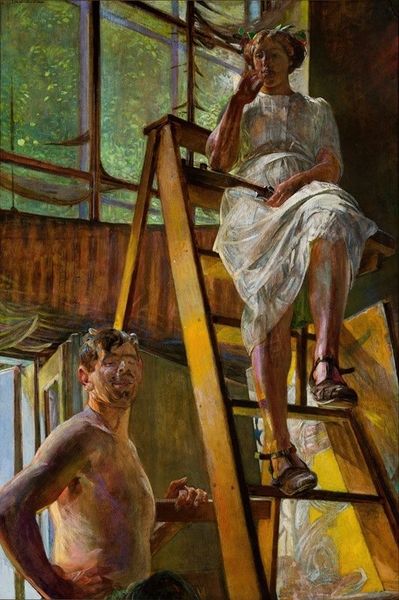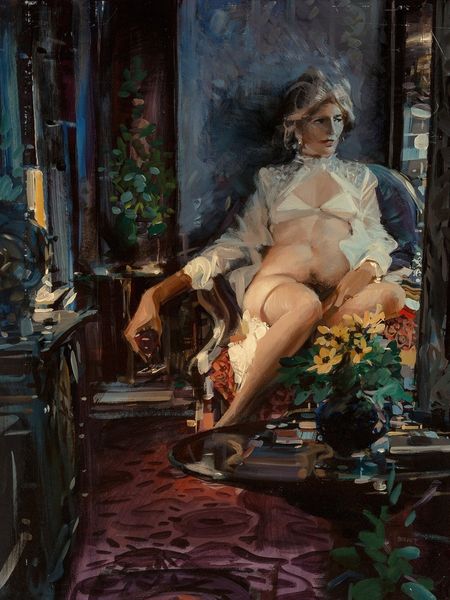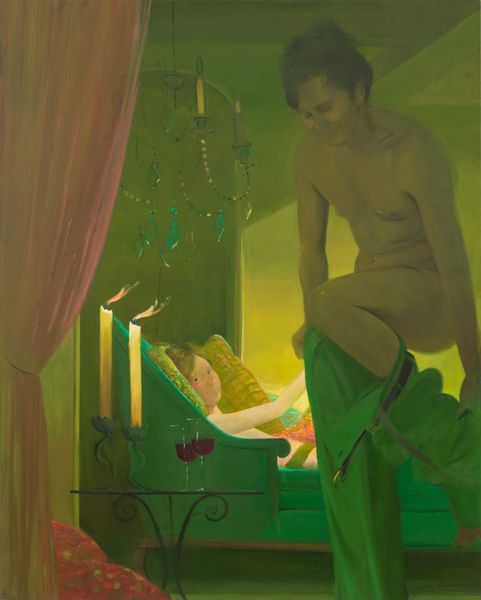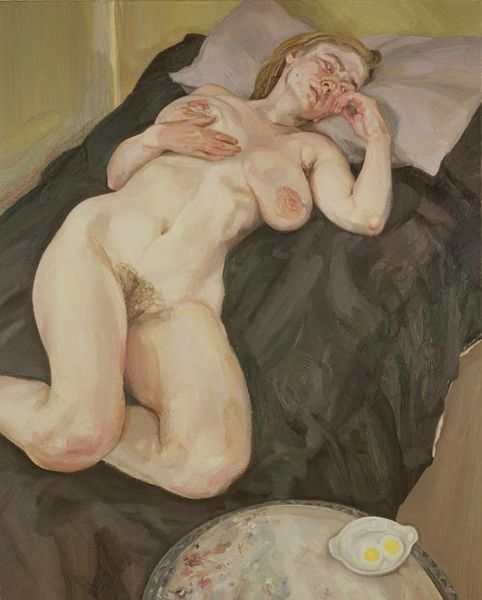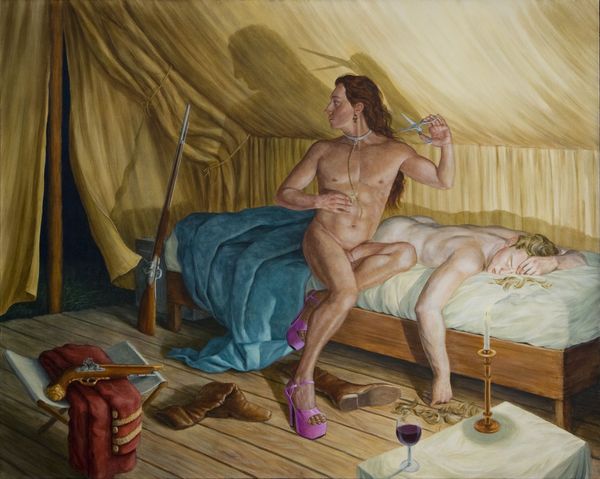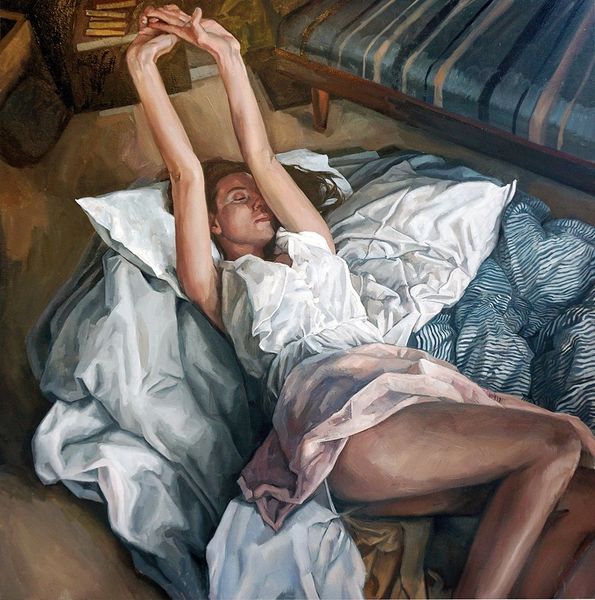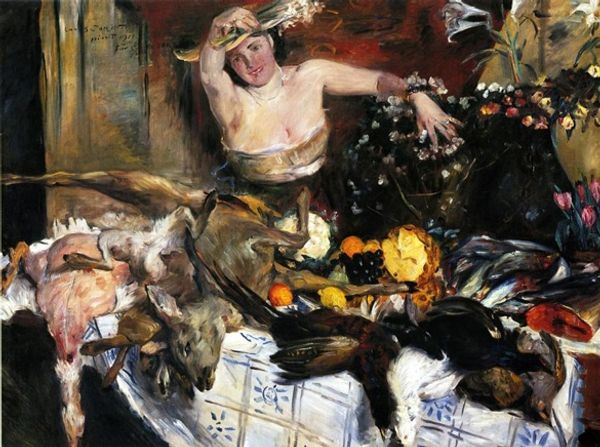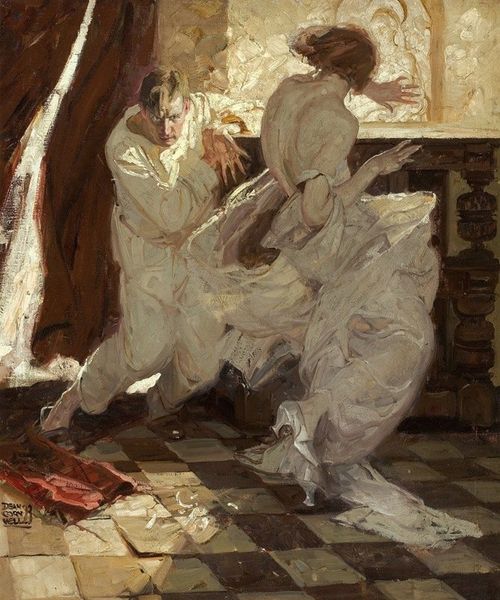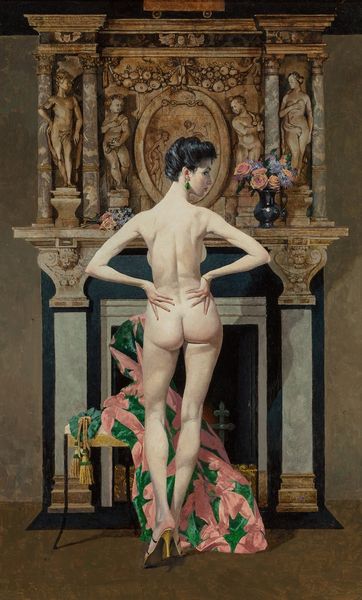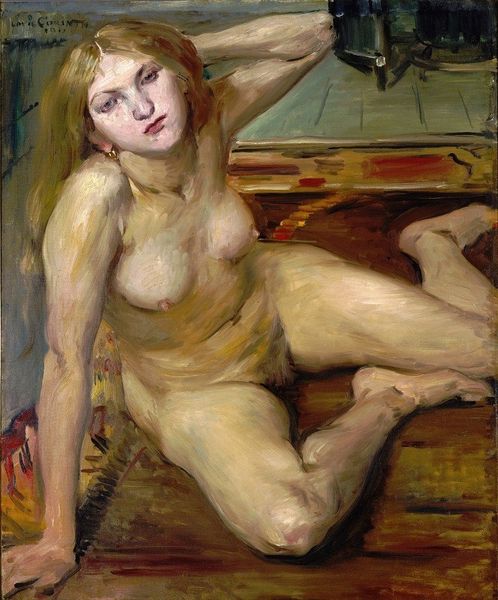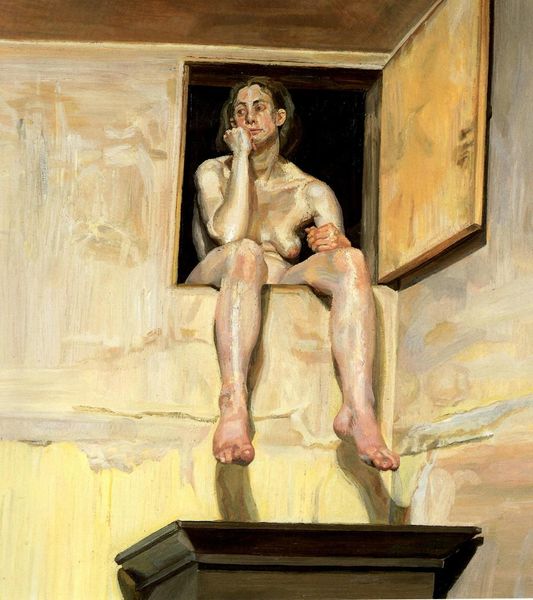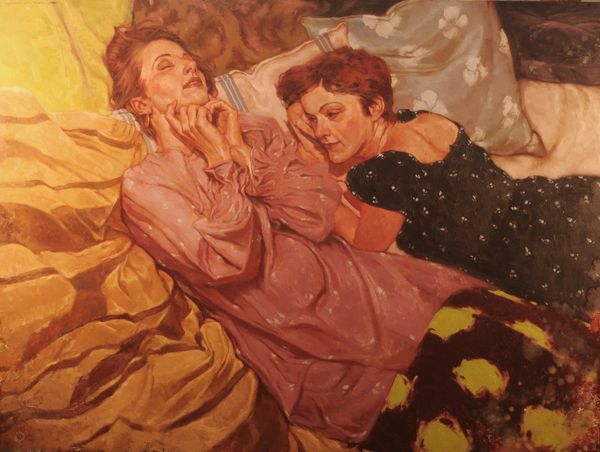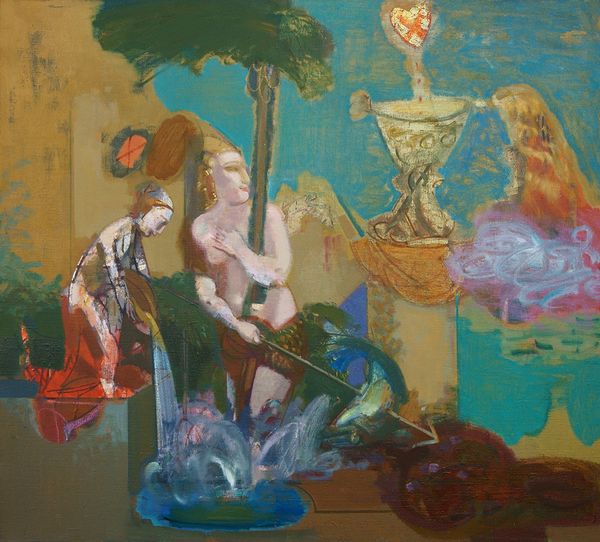
oil-paint
#
portrait
#
gouache
#
figurative
#
oil-paint
#
figuration
#
oil painting
#
symbolism
#
genre-painting
Copyright: Public Domain: Artvee
Editor: This is "Artist's Death" by Jacek Malczewski, painted in 1909. It's an oil painting, and the composition feels quite theatrical, almost staged. There's so much going on! What do you see in this piece? Curator: I see a critical reflection on the conditions of artistic production. Look at the artist’s studio, represented here not as a space of pure inspiration, but as a cluttered site of labor. Consider the materiality of the painting itself. The visible brushstrokes, the layering of oil paint – these are physical reminders of the labor involved. Editor: That's a good point. It almost seems to expose the construction of art. Curator: Precisely. And who are these figures, seemingly pulled from classical and biblical sources, and what are they *doing*? How does Malczewski depict the relationships, say the somewhat subservient and disturbing foot-washing scene in the foreground. What work are these bodies performing? Are they representative of certain themes throughout Polish culture? Editor: The foot-washing is what struck me initially; it feels incredibly intimate and strange within this cluttered space. And the labor is clearly on display by its staging, almost a tableau vivant in artistic production. Curator: Think about the use of models – what did they get paid? What social class did they belong to? Was this scene actually happening, and even if not, what message is Malczewski trying to covey by suggesting it did, and by constructing the painting so as to reference them? Consider this too – how the wheat, traditionally a sign of bountiful labor, features as crowns! What might *that* be a comment on in the context of agricultural Poland in the early 20th century? Editor: This is really prompting me to rethink my initial aesthetic response and focus more on the context. It makes you think about the social circumstances that allow such intimate, maybe even exploitative acts, to take place within the framework of art production. Curator: Exactly. Art is never created in a vacuum. Looking at it through a materialist lens really grounds the image and, at the very least, encourages the unpacking of this strange tableau.
Comments
No comments
Be the first to comment and join the conversation on the ultimate creative platform.
